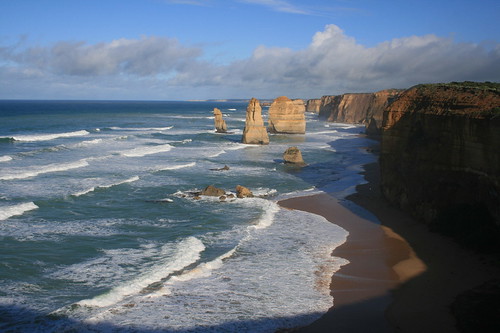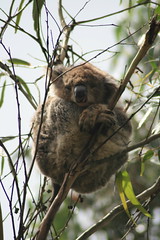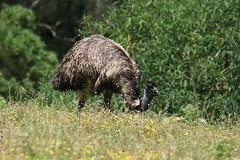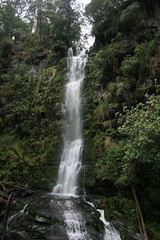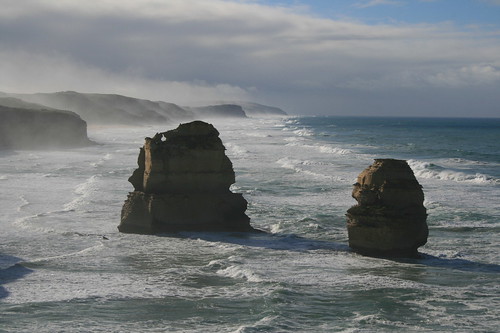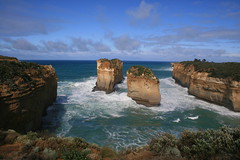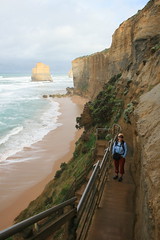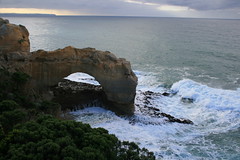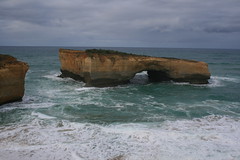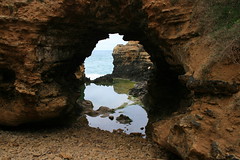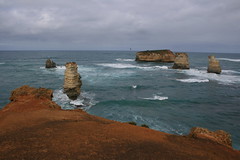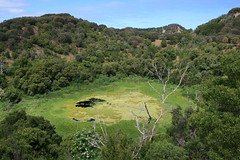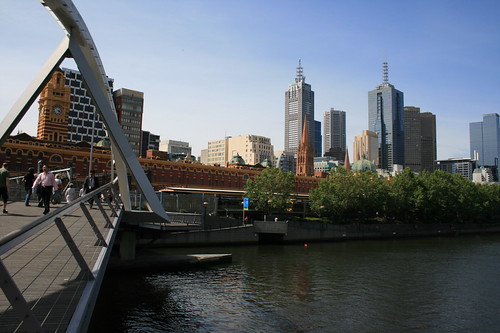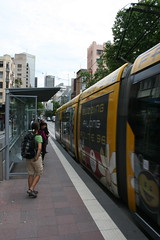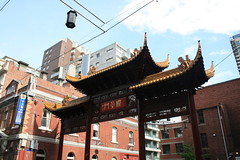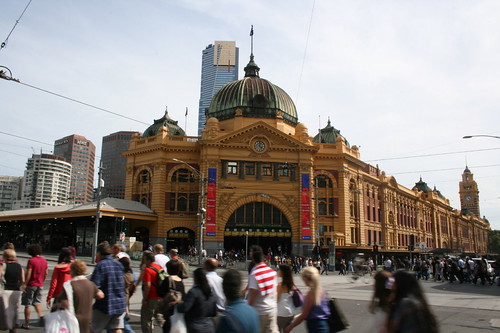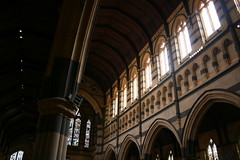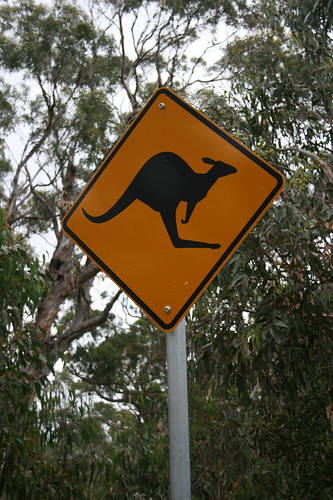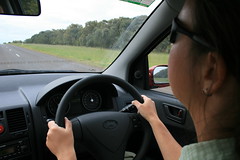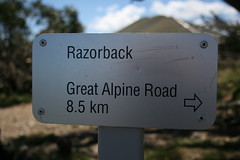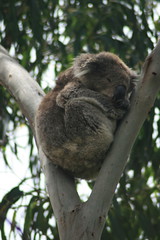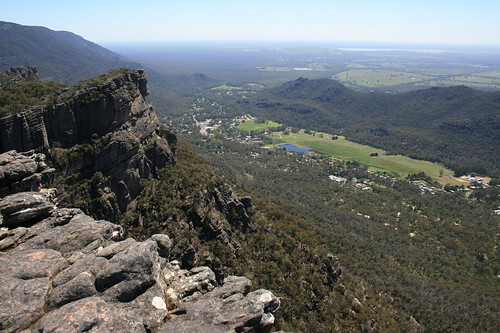
The next leg of our journey through Australia brought us inland to Halls Gap and Grampians National Park, known for its rugged bushwalking, waterfalls and wildflowers. Then there are the kangaroos.
We selected D'Altons Resort as our accommodation in Halls Gap based on the recommendation of Lonely Planet's guide to Australia and the price. Plus, the guidebook mentioned kangaroos and the resort's Web site featured pictures of the animals - both turned out to be accurate.
The evening we arrived, we spotted the first kangaroos of our trip, just off our cottage's front porch on the lawn. The next morning, while sipping coffee and looking out the front window, a line of eight bounced up from our driveway, across the grass and into the trees. Like clockwork, they would return every morning and evening.
(Really, you're likely to see kangaroos anywhere you stay in Halls Gap. And cockatoos. They're everywhere.)
That first morning, we had planned a good day of hiking but decided to try our luck with wildlife on a quick walk near the park's visitor center. Sure enough, we saw kangaroos here and there munching grass in the morning sun, as well as a few red deer. We also encountered something we hadn't expected: cold.
In our first few days in the country - the first few days of the month - the TV news had already said it was the warmest November on record since 1925. And it was quite a change from the early cold spell back in Missoula. We thought we'd never need them, but it was a good thing we packed warm coats and gloves - that walk was a chilly one. It quickly warmed up, though, and we hit the trail on the first real hike of our holiday.
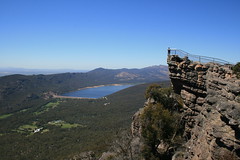
A few hundred meters up the road from our cottage, we set out on the Wonderland Loop. The track follows a creek behind town, then climbs up through rocky mountains before topping out at The Pinnacle, an outcrop above Halls Gap. From there, it descends the face of the mountains back into town. Along the way, we saw plenty of wildflowers remaining from the spring bloom - the result of bushfires throughout the area in 2006. (While there were still plenty of blackened trees, the park appears to be recovering well, with plenty of green growth.)
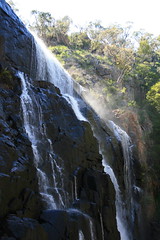
We spent the next day driving around the Grampians and taking shorter strolls to see waterfalls and scenic overlooks. These included The Balconies, MacKenzie Falls, Lake Wartook, Silverband Falls and Mount William.
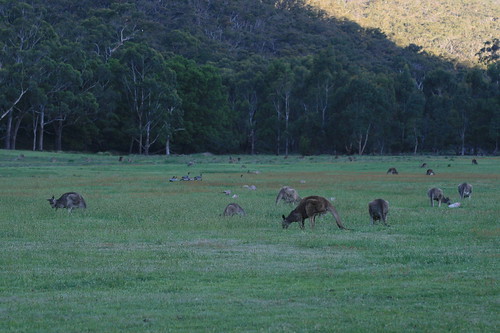
After dinner at the cottage that evening, we decided to check out the trail near the park visitor center again to snap a few more wildlife pictures. We hit the jackpot - a field filled with kangaroos big and small, eating and bouncing around. There were probably a couple of hundred or so, and we lingered for a while to watch.
The next morning, we departed early - we had a full day's drive east ahead of us, to Victoria state's high country and Alpine National Park.
See all of our pictures here and here.
Fyans Creek Loop
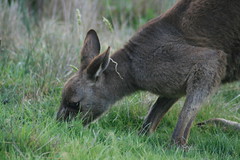
This short loop walk travels through the bush north along the west side of Fyans Creek, crosses a bridge, then travels south to a field, crosses another bridge and returns to the start. See kangaroos and red deer in the morning and evening.
Distance: 2.5-kilometer loop.
Trailhead: The walk begins and ends at Brambuk - The National Park and Cultural Center, off Grampians Tourist Road on the southern edge of Halls Gap.
Wonderland Loop

This trail was the highlight of our time in the Grampians. From the parking area, it follows Stony Creek behind town and past the Venus Baths - where the water flows though a series of pools and over smooth rocks - then climbs to Splitters Falls and the Wonderland parking area. Here, it ascends through the narrow-walled Grand Canyon, a great place to find some shade, and past Bridal Veil Falls and Silent Street to The Pinnacle, a lookout above Halls Gap. The trail then descends through the forest on the face of the mountains and back to town. (The only downside to this walk is there are many metal railings and steps that look out of place.)
Distance: 9.6-kilometer loop.
Trailhead: The trail begins and ends in the parking area across Grampians Tourist Road from the shops in Halls Gap.
The Balconies
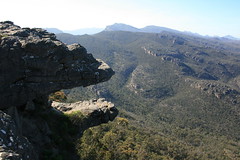
This easy walk travels out a rock outcrop with views north to Lake Wartook, then through the forest to a pair of ledges known as The Balconies.
Distance: 2 kilometers round trip.
Trailhead: From Halls Gap, follow Mount Victory Road 12 1/4 kilometers northwest and turn south on the access road. Drive two-thirds of a kilometer to the parking area.
MacKenzie Falls
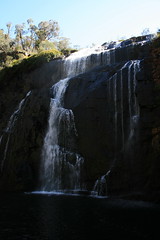
A path leads to overlooks and the base of MacKenzie Falls, a large cascade that, I gather, looks much more impressive when there's more water. (At one time a trail continued to the Zumstein picnic area, but the route was closed after bushfires.)
Distance: 2 kilometers round trip.
Trailhead: From Halls Gap, follow Mount Victory Road 17 1/4 kilometers northwest and turn north on the access road. Turn west at the T intersection and drive a short distance to the parking area.
Silverband Falls
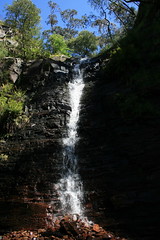
This trail travels through a fern forest to Silverband Falls, which cascades down a wall then disappears underground. We had good luck spotting cockatoos here, as well.
Distance: 1.4 kilometers round trip.
Trailhead: From Halls Gap, follow Mount Victory Road about 5 kilometers west and turn south on Silverband Road. Follow the road about 7 kilometers to the parking area.
Mount William
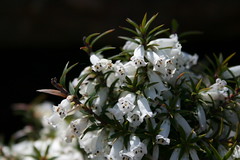
From the parking area, follow the closed road up to the top of 1,167-meter Mount William, the highest point in the Grampians. A lot of wildflowers were in bloom along the road when we visited, and the top provides expansive views west into the park and east out of the park.
Distance: 3.8 kilometers round trip.
Trailhead: From Halls Gap, follow Grampians Tourist Road about 12 1/4 kilometers south, then turn east on Mount William Road and drive about 9 1/2 kilometers east to the parking area.
